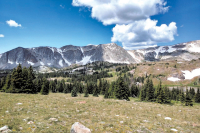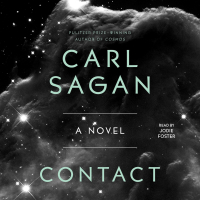Tell it from the mountain: ‘Uncle Ted’ White on bluegrass, the late Steve Sutton
What defines bluegrass music would have to be the banjo played “The Earl Scruggs Way” with the three-finger roll. If it’s played clawhammer style, it would have to be classified “Old Time.” Now, bluegrass music, as a genre, grew out of this. As to musicianship, the chief — Bill Monroe — said if you could play bluegrass music right you could play anything else. What I’ve found is that bluegrass music, like jazz, is built around tight timing. It’s not loose. If you understand that, you can apply it to other types of music.
Disconnected from a connected world
Ugh.
The moment my girlfriend handed over my soaking wet smart phone, a shiver of isolation ran up my spine. That’s the last time I try to sneak a water bottle of cheap domestic beer in her purse into a bluegrass show, let alone have my phone also in said purse for “safe keeping.”
When my last song is sung: A conversation with Rob Ickes
In the bluegrass world, it doesn’t get much bigger than Rob Ickes.
Fifteen-time “Dobro Player of the Year” by the International Bluegrass Music Association (IBMA), Ickes was a founding member of Blue Highway, a group as innovative to the genre as they were successful.
The music of the heart: 48th annual Smoky Mountain Folk Festival
It gets to the point without distraction.
Folk music — the intersection of the human heart and the greater world — lies at the foundation of American culture. From the folk traditions and musicians of the British Isles that eventually made their way to the high peaks and low valleys of Southern Appalachia centuries ago, folk music is a timeless sound nurturing urgent lyrics.
No way to stop the flow: A conversation with Tim O’Brien
In the annals of bluegrass history, the chapter on multi-instrumentalist Tim O’Brien is not only long and bountiful, it’s also ongoing — a continual evolution of string music and melodic exploration. O’Brien hails from Wheeling, West Virginia, home of the WWVA Jamboree, which — since 1933 — is one of the most popular country and variety radio programs, second in longevity after the “Grand Ole Opry.”
As a teenager, O’Brien dropped out of college in 1973 and hit the road with dreams of becoming a professional musician. By the late 1970s, he ended up in Colorado, forming the groundbreaking newgrass act Hot Rize (which won the first International Bluegrass Music Association award for “Entertainer of the Year” in 1990).
Cataloochee Ranch welcomes Chatham County Line
If you want to understand the history of bluegrass music, you need to look at its entire spectrum — of sound, of intent — as one large tree. With the deep, sturdy roots that are Bill Monroe, Jimmy Martin, Dr. Ralph Stanley, and so on, the trunk is the culmination of those roots, with each growing branch another avenue of creative possibility and sonic exploration.
Light on my feet, ready to fly: Doyle Lawson & Quicksilver roll into Cherokee
To say Doyle Lawson has had a full career would be an understatement.
Nowadays, Lawson is regarded as a pillar of the bluegrass world. But, at 73, he still feels as if he’s just getting started, where a never-ending reservoir of creativity and enthusiasm spills out onto the stage each night.
Rivers that I’ve crossed: Unspoken Tradition rolls into Sylva
The key element of bluegrass music is the “unspoken” — in practice, in performance and in personality.
Whether you’re 8 years old or 80, the foundation of bluegrass lies in its traditions, where knowledge and technique is passed down through the generations. That transition of wisdom is found while strumming in a field at a festival with strangers, chugging along onstage in the heat of a jam with your friends, or pickin’ and grinnin’ on a back porch with family members.
This must be the place: Ode to Steve Sutton — banjo legend, dear friend
It came as a shock that has had a ripple effect within music circles around Western North Carolina and beyond.
Dawg days of bluegrass: David Grisman picks on WNC
He’s the common denominator.
When you look back at the career of iconic bluegrass mandolinist David Grisman, you’re diving deep into the rich and vast history of that “high, lonesome sound.” And yet, the more you wander into that melodic hub of David “Dawg” Grisman, you also find yourself zooming like a rhythmic train across the spectrum of sound, making additional stops at folk, jazz, world fusion, and acoustic music.













